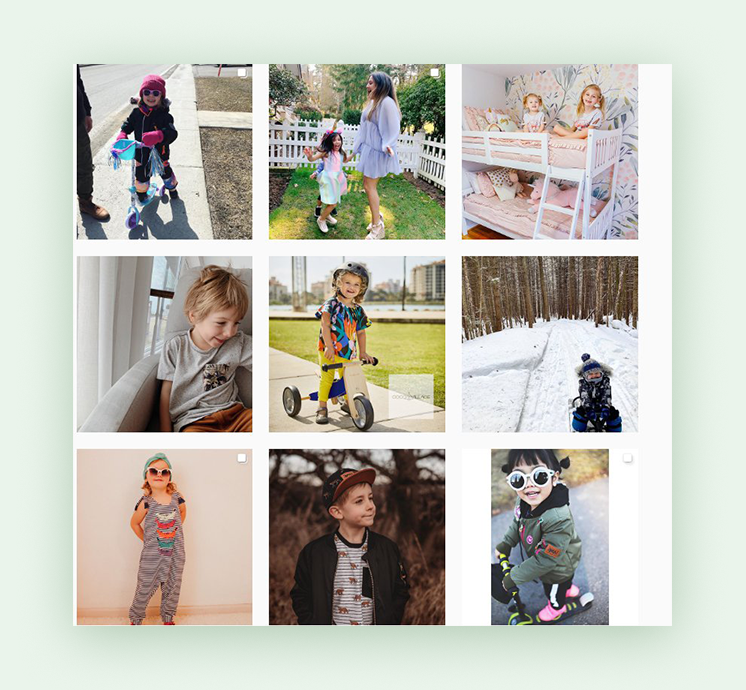We’ve adjusted our tools - Learn more
- Learn
-
Articles
Read about influencer marketing
-
Growthnotes - Newsletter
Insights for the modern marketer
Deux par Deux, like most fashion retailers, releases collections two times a year.
During those collection launches, things are messy and tend to go fast - the marketing department is juggling with multiple deadlines, and the operations team is catching breaking plates.
The goal for any retailer during that period is to start selling their inventory as fast as possible.
As the season moves along, they lose hefty profit margins to discounts and clearance sales.
In other words, at the beginning of the season, people are paying more in the name of timing.
Deux par Deux wanted to include micro-influencer marketing into their marketing mix to:
In this article, I will cover how they did so using inBeat.
Deux par Deux wanted 50-60 collaborations and 100+ unique creative assets.
They can expect to close 10% to 15% of the influencers we contact. This means that we need to pitch anywhere from 400 to 500 micro-influencers.
In the case where more influencers agree to work with their brand, they will have the leverage to choose their influencers.
Deux par Deux decided to work with micro-influencers for multiple reasons:
In Deux par Deux’s case, finding the right influencer persona is straight forward:
Deux par Deux found influencers by using our tool, inBeat, an influencer discovery tool. The number of potential collaborators they needed to contact was too high to do it by hand (if you want to see how you can find influencers by hand, I recommend this article).
They filtered their search:
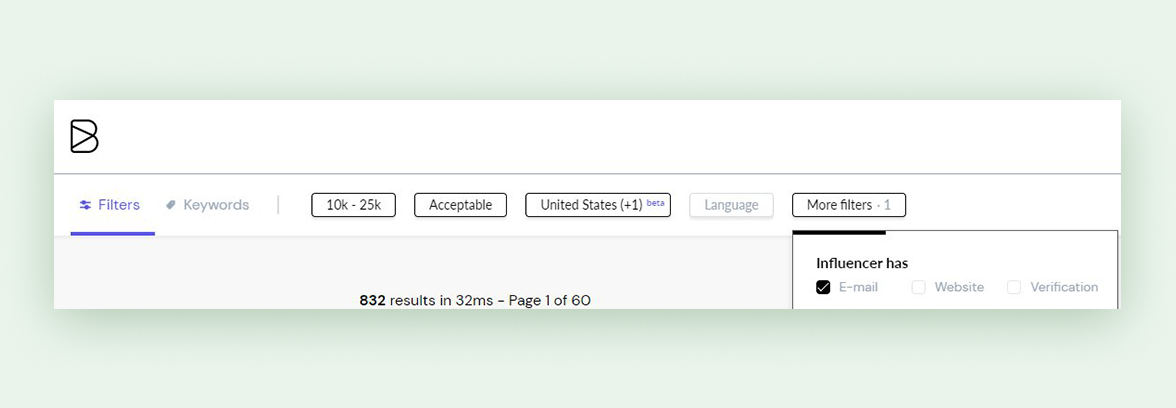
They needed each influencer to have an email because they wanted to contact them in bulk through Mailshake, a cold emailing tool.
They used three search terms: (1) mother,(2) mom, and (3) newborn, independently. The reason they ran a search with the keyword newborn is that they wanted roughly 10 influencers with a newborn child to promote their baby collection.
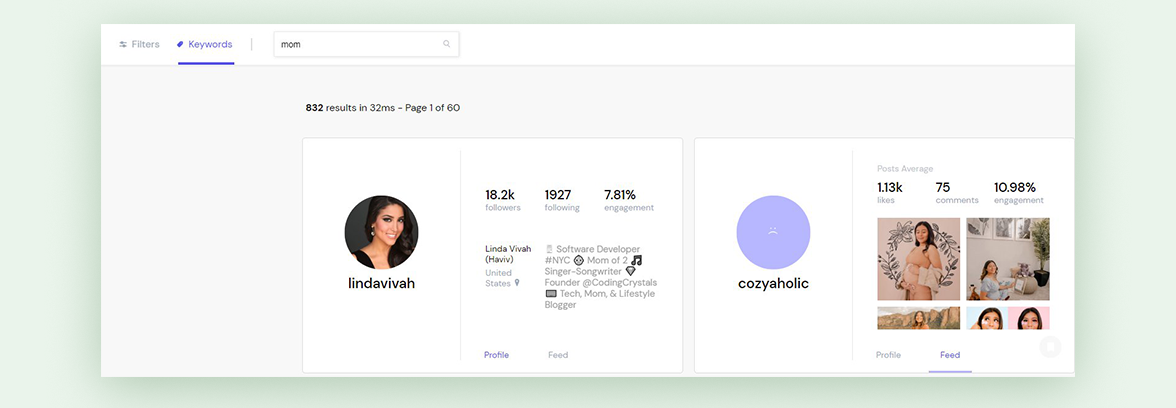
Once they finished selecting the influencers for their campaign, they exported their campaign to a CSV format, which they imported to Mailshake:
They then wrote their pitch and follow-up sequences (3 follow-ups), and they kicked-off the campaign.
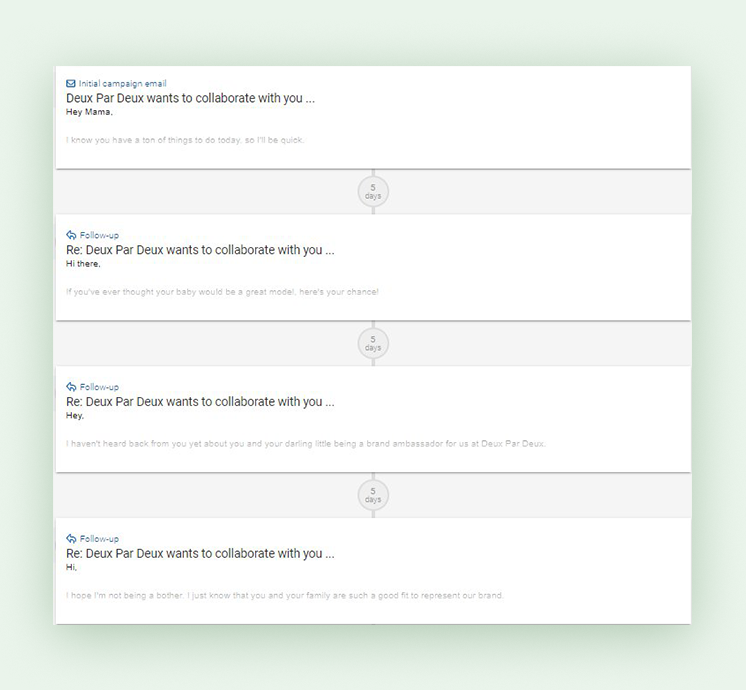
With this sequence, they got 70 collaborators:

At this point, Deux par Deux negotiated with 90 influencers, 20 declined, and 70 accepted, from which they chose 60.
Once Deux par Deux chose their influencers, they need to onboard their new ambassadors. This means getting and sharing the right information.
They used a simple Google Form to capture all of the information they needed from the influencer (email, address, name of their children, etc.) will be more than enough.
They then setup an autoresponder that triggered when the form was filled out. This message gave the influencer all of the relevant guidelines:
They then integrated the form to Google Sheets to create their lightweight influencer CRM.
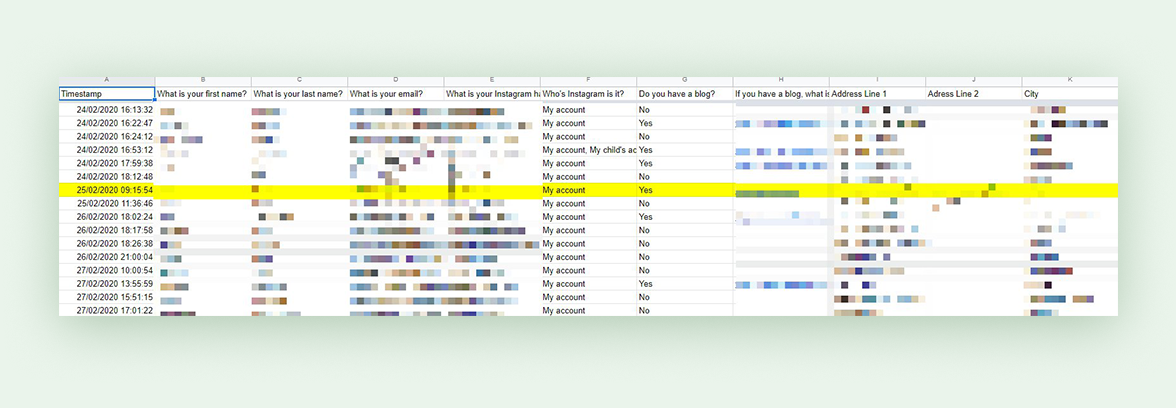
They used this sheet to track:
